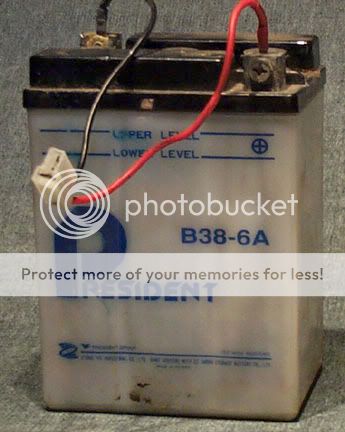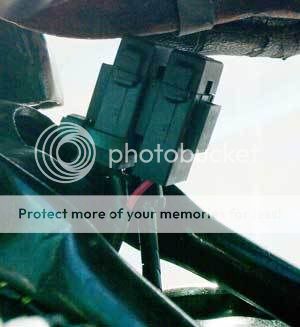Aloha,
I thinking I need a fuse on my M21, at least one. Now, where do I put it?
I’m thinking either between dyno and regulator or somewhere between regulator and + on the battery?
Any thoughts on this will be by me appreciated.
Happy holidays,
Simon
On the live side of the battery is the usual place.
email (option): horror@blueyonder.co.uk
I agree! Any mishap and the battery is totally isolated. Ron
email (option): ronpier@talk21.com
/s
Running negative earth I have mine connected to the positive terminal of the battery so it tucks in the top of the battery case.
Rob
email (option): robmiller11(a)yahoo.co.uk
/s
email (option): horror@blueyonder.co.uk
Thanx Horror!
I had never ever heard the term “live” used in this sense before. Threw me off a bit.
My M21 wired neg. earth, as per original wiring. Although I have simplified the wiring some (one would think that would be just about impossible :D).
My Bonneville is pos. earth, and my Vespa I AC, got all kinds!
Thanx all for good input!
/Simon
If you have ever touched the positive wire on your house mains wiring you will know why it's called live.
I always fuse both the battery and the dynamo
The battery use can blow but when the bike is running you are still pumping in 10A from they dynamo as it generates regardless of weather it is connected to the battery or not.
A short between the dynamo & the frame will not cause he bike to self destruct but can overload the dynamo to the point of melting the solder in the communitator.
And being anal, both sides of the battery.
I make a T shape in flat strap small enough for the upright section to slide down the frame tube under the seat.
On th cross bit of the T are 3 fuses, one for each side of the battery & the A wire from the regulator.
email (option): bsansw1@tpg.com.au
There's no mention in this of the amperage of the fuse. Does anyone have an opinion?
80Watts / 6 volts = 13.3 so 10 to 12 A Slow blow on the generator
For the battery 20A is the usual
I have been running a 10A on my generator for 20 years without problems.
mostly I change it because I pull it out to help a battery ignition bike owner to get home.
email (option): bsansw1@tpg.com.au
Trevor ... aren't there two different measurments for fuses? I heard that SAE fusing (US fusing) is measured differently from, for example, the UK approach.
cheers, Scott
If you have an electronic voltage regulator, it is worth checking their recommendations as that is probably the most delicate part of the system.
The instructions for the Dyo-Tec regulator that I use indicates 15a when used at 6v and 10a at 12v.
The instructions for the Dyo-Tec regulator that I use indicates 15a when used at 6v and 10a at 12v.
The fuse on the dynamo power output is there to protect both the dynamo & regulator should one of them go short to ground .
It also protects the wiring should there be a short else where.
The way it works, say you get a short in the headlamp shell.
The battery fuse would blow but the dynamo is connected directly to earth and generates its own power so the generator will continue to feed the short circuit causing the insulation to melt and wrecking the loom.
A 10 Amp fuse on the power side of the regulator would also blow so the wiring would be fine with the exception of the actual short.
email (option): bsansw1@tpg.com.au
trevor
Thanks for the input. Mine's had a 15a fuse for ages, I bought some 20s as spares.
Aloha,
Picking up this old thread again!
If I am to put a fuse right after the dyno, where do I put it? In the wire going from “F” or from “D”?
I am also planning on putting a fuse on the + side on the battery, as suggested above.
/Simon
Why do you want to put a fuse in a dynamo wire. It was never done on cars and I have never known it to be done on motorcycles.
On my Bonneville I have a fuse on one of the alternator wires, as is commonly done.
/Simon
So for instance the power wire to the headlamp breaks and shorts out on the headlamp shell, ameter reflector body etc.
The battery fuse would instantly blow but the generator will continue to supply full power . 13A ( if you are lucky ).
This can damage the dynamo if your regulator is not working properly, or simply make the wire hot enough to melt the insulation then go short everywhere.
Now there are not many wires in a M20 loom , but replacing them is a job I do not want to do just because a wire broke.
I have seen an A65 actually catch fire & that was traced back to a short in the power feed to the ammeter.
Seen lots of bike with a total mess of melted wires where fusing the alternator / generator to 90% of it's maximum would have saved the wiring.
British motorcycle manufacturers in their lofty engineering correctness point blank refused to fit a fuse at all till they were forced to then it was just a single on on the battery, no doubt because a short caused a mike to burn in a shed or garage .
Modern motorcycles fit a dozen fuses for good reasons.
Now in the UK where it is still light enough to be seen riding with no lights whatsoever at 10pm in summer, things are a bit different elsewhere like here where it is pitch dark 1 hour after sunset.
email (option): bsansw1@tpg.com.au
I totally agree with you Trevor. Now where is best to put the fuse, F or D? Or does it matter at all?
/Simon
Pickie of the T plug on the battery, All of my bikes are wired likr this so the battery terminals can be painted over with Liquid Electrical Tape so there is no more corrosion & my wires get a full 6 Volts.

This is where I fitted the fuses finally and to date the only time I have gone there is to donate a fuse to a latter model battery ignition bike rider. Sitting where they are no one has ever noticed them. The fuse holders are tie wrapped to an 8" length of steel flat bar that simply drops down into the frame cavity

The fuses are on both power wires, the battery & the A wire from the rectifier.
And being where it is there is only a few inches wire between the fuse & the rectifier.
email (option): bsansw1@tpg.com.au
